TikTok has come a long way from lip-sync videos and viral dances.
Now it’s one of the most influential platforms on the internet with numbers that marketers, creators, and brands can’t afford to ignore.
The app now reaches over 1.5 billion users each month, and it’s not just Gen Z scrolling anymore; millennials, Gen X, and even boomers are joining the feed.
But beyond user counts, what’s really happening on TikTok this year?
How long are people watching?
What kind of content is performing best?
And is TikTok still worth the investment for your time, budget, or marketing strategy?
In this post, we’ll break down the most useful, up-to-date TikTok stats you need to know in 2025.
And the best way to use these stats to your advantage? Use a pro TikTok scheduler to post smarter and stay consistent.
CTA: Ready to Champ-ion Your TikTok Game?
Schedule, analyze, and stay consistent—Social Champ makes TikTok marketing smooth, smart, and stress-free.
Short Summary
- TikTok has surpassed 1.59 billion monthly active users in 2025
- It has a highly engaged audience spending an average of 95 minutes daily on the app.
- Users aged 18–34 make up the majority of TikTok’s audience.
- The platform’s strongest engagement comes from micro-creators, with rates between 2.88% and 7.5%, making authenticity and niche content more valuable than large follower counts.
- TikTok’s ad performance remains competitive, with CPMs and CTRs aligning closely with Instagram Reels and YouTube Shorts.
TikTok Stats 2025: Key Highlights and What They Mean
TikTok’s evolution in 2025 is nothing short of remarkable. While boasting over 766 million daily active users, the platform has firmly established itself as a global social media powerhouse.
But the impact goes beyond sheer numbers. Users now spend an average of 58 minutes per day on TikTok, underscoring its role as a primary source of both entertainment and information worldwide.
For marketers, this engagement translates into real opportunity.
Nearly 7 in 10 users report discovering products on TikTok that they ultimately purchase.
With TikTok’s ever-refining algorithm, content reach is no longer tied to follower count but driven by relevance and timing.
Engagement metrics highlight this dominance further. TikTok’s average engagement rates range from 2.88% to 7.5%, varying by creator size.
Interestingly, accounts with fewer than 100,000 followers also see high engagement, emphasizing the growing value of niche content and authenticity.
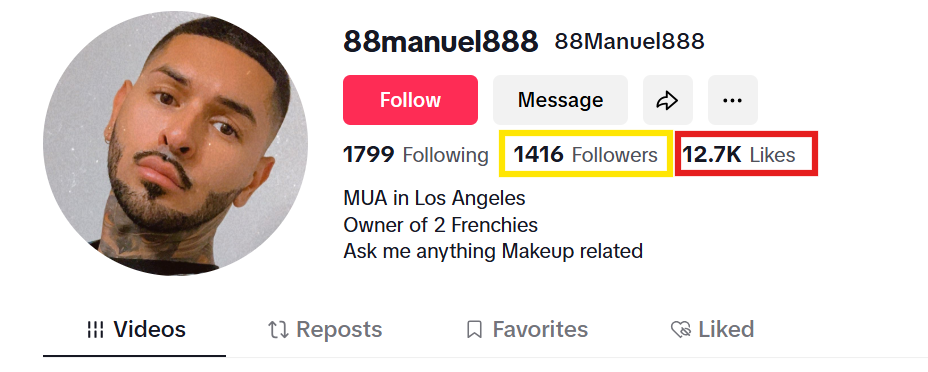
Demographically, TikTok remains youth-centric, with over 70% of users aged 18 to 35.
This active, engaged audience makes TikTok indispensable for brands targeting younger consumers.
So, what does this mean for marketers, creators, and brands?
TikTok has become a dynamic ecosystem blending discovery, engagement, and commerce.
Success on this platform now hinges on understanding shifting audience behaviors, refining content strategies, and leveraging tools like TikTok Shop and in-feed ads to drive measurable growth.
TikTok Demographics: Who’s Creating and Consuming in 2025?
TikTok’s user base in 2025 is broader and more diverse than ever before. While it still skews young, shifts in age, region, and content interests are reshaping who’s active and how.
Let’s take a look.
Age Breakdown
- 18–24 years: Approximately 33.3% of users fall into this age group, making them the largest demographic on TikTok.
- 25–34 years: Around 36.1% of users are in this category, indicating a significant presence of Millennials on the platform.
- 35–44 years: This group comprises about 15.4% of users, showing that Gen X is increasingly engaging with TikTok.
- 45–54 years: Approximately 8.0% of users are in this age range.
- 55+ years: Users aged 55 and above make up about 7.2% of the platform’s audience.
(Source: Oberlo)
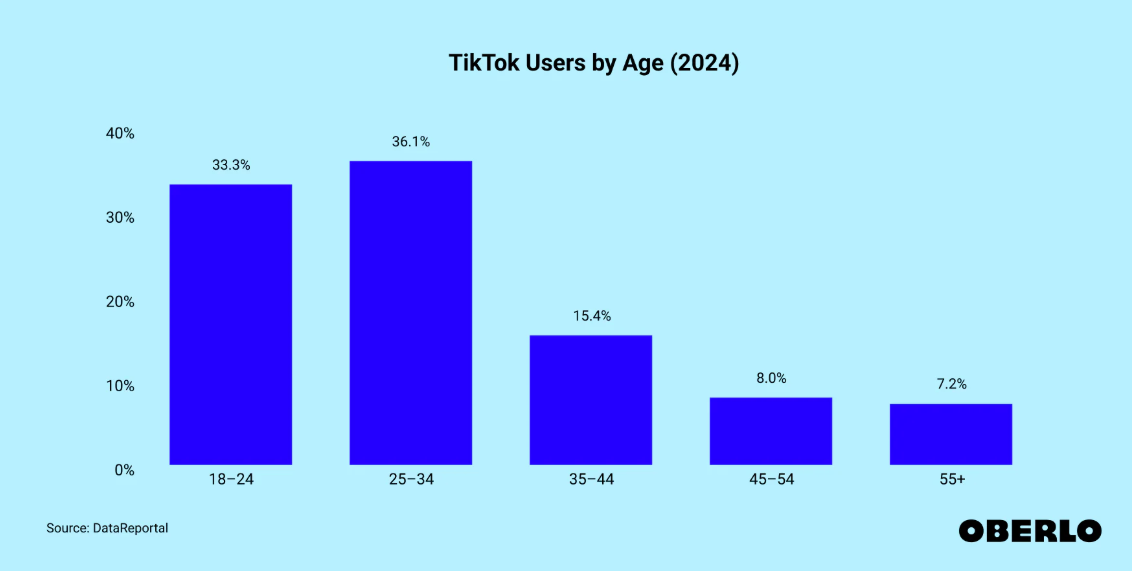
These figures highlight TikTok’s broadening appeal across various age groups.
Gender Distribution
While the overall split is fairly balanced, gender preferences often vary by niche.
Beauty, fashion, wellness, and book content skew female, while tech, gaming, and fitness see stronger male engagement.
At a bird’s eye view
- 44.3% female
- 55.7% male
Gender Distribution by Age Groups
TikTok’s user base this year shows a slight male skew across most age segments.
Males outnumber females in every age group, with the most notable gap seen in the 25–34 bracket, 20.7% male versus 14.6% female.
The 18–24 group also shows a similar pattern, with 16.6% male and 14.1% female users. Even in older brackets like 35–44 and 45–54, men consistently lead, though by smaller margins.
(Source: Dataportal)
TikTok Stats for Country & Regional User Demographics
TikTok’s global footprint in 2025 is expansive, with significant user bases across various countries and regions.
Top Countries by User Base
- United States: Approximately 135.79 million users, making it TikTok’s largest market.
- Indonesia: Around 107.7 million users, showcasing rapid adoption in Southeast Asia.
- Brazil: Nearly 91.75 million users, reflecting strong engagement in South America.
- Mexico: Approximately 85.36 million users, highlighting growth in Latin America.
- Pakistan: Around 66.87 million users, indicating a significant presence in South Asia.
Regional Distribution
- Asia-Pacific: 45% of users. Home to the largest segment of TikTok users, with countries like Indonesia and Vietnam leading in user numbers and engagement.
- North America: 20% of users. The United States dominates, both in user count and content creation.
- Europe: 18% of users. Nations like the United Kingdom and Germany show steady increases in user adoption.
- Middle East & Africa: 5% of users. Emerging markets with growing user bases, notably in countries like Saudi Arabia and Egypt.
This widespread adoption underscores TikTok’s global appeal and its ability to resonate with diverse audiences across different regions.
Featured Article: Marketing for Interior Designers 101: Smart Strategies That Work
TikTok Demographics by Industry & Purpose of Usage
TikTok has evolved beyond a mere entertainment platform, becoming a significant player in various industries.
Entertainment & Content Consumption
According to PEW Research, a significant 95% of U.S. adult TikTok users report using the platform for entertainment purposes.
Among these, 81% cite entertainment as a major reason for their usage.
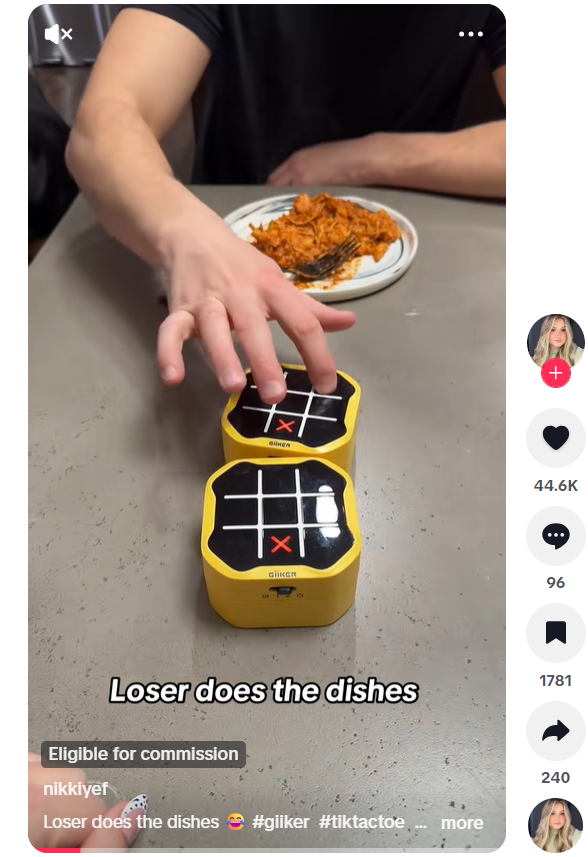
News & Information
The same research by PEW suggests that almost 36% of people say they use TikTok to keep up with politics, while 52% report they get some kind of news or information from the app.

Business & Marketing
Over 7 million businesses utilize TikTok for advertising and organic content to reach potential customers.
Small and medium-sized businesses report an 88% increase in sales after marketing products on TikTok, highlighting its effectiveness as a marketing tool.
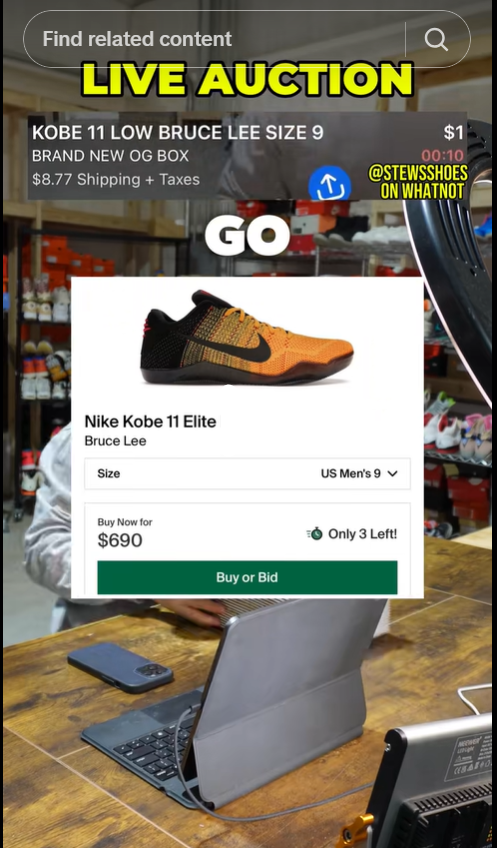
Finance Advice
The hashtag #FinTok, which represents TikTok’s financial content community, has surpassed 4.7 billion views, reflecting the platform’s growing influence in the personal finance and investing space.

Health & Beauty
Meanwhile, the beauty and skincare space is thriving as well, with hashtags like #makeup and #beauty amassing over 756.2 billion combined views, underscoring TikTok’s massive impact on consumer trends and product discovery in the beauty industry.
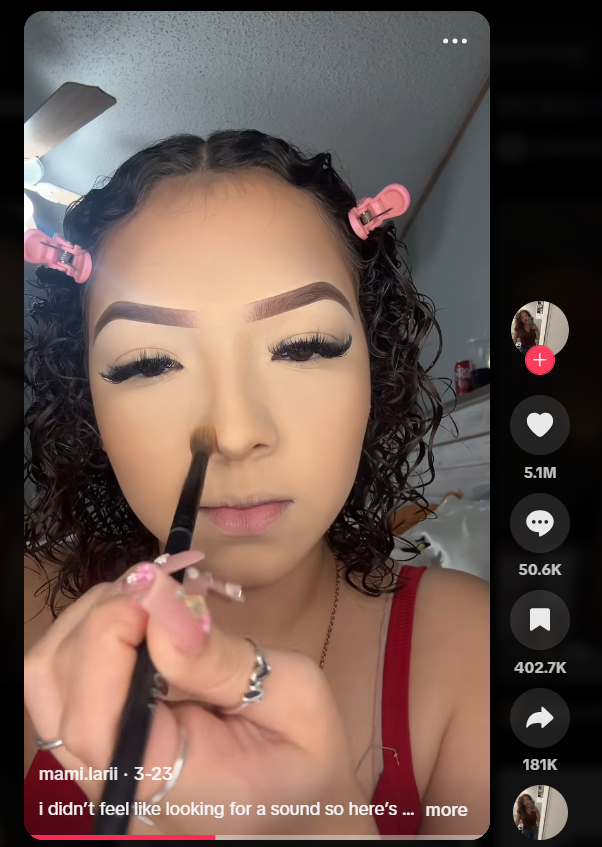
TikTok Marketing & Ad Performance Stats Brands Must Know
In 2025, TikTok hosts billions of active users and deep engagement across age groups. It has become an essential platform for brands looking to connect, convert, and scale.
But to do that effectively, marketers need to move beyond surface-level insights and understand how TikTok performs as a marketing and ad platform.
Let’s break down the key ad performance metrics and what they mean for campaign planning this year.
-
CPM, CPC, and CTR: What TikTok Campaigns Really Cost
One of TikTok’s main appeals to advertisers is its cost-efficiency, especially compared to traditional platforms like Meta and Google.
Average CPM (Cost Per 1,000 Impressions) on TikTok is around $2.62, making it one of the more affordable platforms for broad reach.
In comparison, Facebook’s average CPM sits closer to $8.96, and YouTube ranges between $13–$15, depending on format and region.
Click-through rate (CTR) on TikTok ads averages 0.84%, compared with Facebook (0.9%) and Instagram (0.9%). High CTRs are often tied to native-style ad content that blends seamlessly into the feed.
Cost Per Click (CPC) is also highly competitive, with TikTok averaging $0.25 – $4 across industries.
For e-commerce and consumer brands, this makes TikTok an efficient channel for driving both traffic and intent-stage conversions.
For marketers, these metrics translate into more visibility and engagement at a lower cost, especially for brands willing to invest in creative optimization and trend-relevant content.
-
Advanced Audience Targeting: More Than Just Age and Location
TikTok’s targeting capabilities in 2025 have matured significantly. Advertisers can now fine-tune their campaigns using a combination of demographic, behavioral, and interest-based data.
Key targeting options include:
- Demographics: Age, gender, location, and language
- Interests: Categories such as beauty, tech, parenting, finance, health & wellness
- Device/OS Behavior: Android vs. iOS, device model, and connection type
- Behavioral Targeting: Based on content interaction, in-app activity, and ad engagement
- Custom and Lookalike Audiences: Upload customer lists, retarget engaged users, or mirror buyer behaviors
This level of targeting allows brands to segment audiences not just by who they are, but by how they behave, what they consume, and when they engage.
That’s a powerful edge for optimizing campaign precision and ROAS.
-
Influencer Collaborations: A High-ROI Strategy
TikTok’s creator economy remains central to its ad ecosystem.
Branded content collaborations outperform traditional ads in both engagement and conversion, thanks to the authenticity and relatability that influencers bring.
Here’s how influencer tiers compare in terms of engagement:
- Nano-influencers (1k–10k followers): ~11.9% engagement rate
- Micro-influencers (10k–50k): ~10.2%
- Mid-tier (50k–100k): ~10.9%
- Macro (100k–500k): ~10.8%
- Mega (500k+): ~11.3%
Brands also benefit from more cost flexibility. Average costs for a sponsored TikTok post in 2025:
- Nano: $10–$100
- Micro: $100–$500
- Mid-tier: $500–$5,000
- Macro/Mega: $5,000 – $10,000+
These high engagement rates paired with flexible pricing structures make influencer marketing one of the most effective strategies on the platform, especially when paired with Spark Ads or boosted posts.
(Source: Notta.AI)
-
Strategic Implications for Campaign Planning
Understanding the numbers is one thing; applying them strategically is another. Here’s how brands can leverage TikTok’s ad performance data in real campaign planning:
Lower CPM = More Room to Experiment
With TikTok’s relatively low CPM, brands can test multiple creatives and audiences without overspending.
Engagement over Follower Count
Success on TikTok is less about how many followers you have and more about how relevant and timely your content is. This favors nimble brands and creators who move with trends.
Creative Is King
TikTok’s algorithm prioritizes engaging, native-style content. Brands must design ads that don’t feel like ads, short-form storytelling, and value-driven messaging win.
Influencers Drive Authentic Reach
Partnering with the right influencers delivers higher engagement and trust, especially in verticals like beauty, wellness, finance, and fashion.
Leverage Retargeting & Lookalikes
TikTok’s growing suite of ad tools, including pixel-based retargeting and custom audiences, allows for deeper funnel marketing, not just top-of-funnel reach.
CTA: Going Viral Starts With Showing Up.
Social Champ helps you stay visible with intelligent scheduling and performance-driven planning.
TikTok vs Other Platforms: Where It Stands in Reach and Engagement
As of 2025, TikTok continues to set the pace in short-form video, not just in trend creation but also in audience attention and marketing performance.
While Instagram Reels and YouTube Shorts have rapidly scaled to compete, TikTok’s algorithm-driven discovery model, sticky user experience, and hyper-personalized content feed give it a unique edge in both organic engagement and ad ROI.
But how does TikTok actually measure up against its closest competitors?
The following comparison charts break down performance across critical metrics: active users, engagement rates, and average ad ROI.
These benchmarks offer clear insights for marketers deciding where to allocate their time, creative resources, and budget in 2025.
Platform Comparison: Active User Base (2025)
| Platform | Monthly Active Users |
| TikTok | 1.59 billion |
| 2 billion | |
| YouTube | 2.53 billion |
| 3.07 billion |
Source: DataReportal 2025, Statista
Platform Comparison: Average Engagement Rate per Post
| Platform | Avg. Engagement Rate |
| TikTok | 2.88% to 7.5% |
| Instagram Reels | 0.50% |
| YouTube Shorts | 5.91% |
| Facebook Video | 2% |
Source: Socialinsider, Statista
Platform Comparison: Ad ROI & Performance Benchmarks
| Metric | TikTok | Instagram Reels | YouTube Shorts | Facebook Video |
| Avg. CPM | $2.62 | $2.50–$4.00 | $4.00 | $5.21 |
| Avg. CTR | 0.84% | 0.72% | 0.65% | 0.50% |
| Conversion Rate | 3.4% | 1.08% | 1.4% | 9.21% |
Source: ICUC Social, Awisee, AdBacklog, Store Growers, Varos, Business Dasher,
These comparisons make one thing clear: TikTok leads in organic engagement and cost-effective ad performance, even as other platforms have broader user bases.
For brands that prioritize attention, storytelling, and conversion within short-form content, TikTok remains the most fertile ground in 2025.
How to Use TikTok Stats to Optimize Strategy (Featuring Social Champ)
Data is valuable only when it’s actionable. Instead of getting buried in metrics, the smart move is to use them to shape how you create, plan, and publish content.
Here’s how to translate platform patterns into a sharper TikTok strategy with Social Champ helping you stay consistent, responsive, and intentional.
-
Understand the Engagement Mechanics
TikTok thrives on dynamic engagement, not just passive views. Likes are good, but what drives growth are shares, saves, comments, and replays.
These signals show TikTok that your content is valuable, prompting the algorithm to push it further.
Engagement must be designed, not hoped for. Every video should offer something compelling, whether it’s a hook, emotion, education, or curiosity that nudges users to interact.
Action Steps:
- Design your first 3 seconds to stop the scroll.
- Use captions, prompts, or storytelling arcs that encourage replies or shares.
- Repurpose successful formats; if a narrative style or visual approach worked once, try variations.
- Use Social Champ’s content tags and performance filters to track what types of posts drive meaningful interactions—then double down on those.
-
Prioritize Frequency and Timing Based on User Behavior
Success on TikTok doesn’t happen with random uploads.
Posting consistently—and at the right time signals to the algorithm that you’re an active, reliable content source.
It also increases your chances of landing on user For You pages when they’re most active.
Action Steps:
- Establish a predictable publishing rhythm: this could be three to five videos per week.
- Use Social Champ’s scheduling tool to batch-schedule posts ahead of time, freeing up creative energy for engagement and community-building.
-
Align Your Content With Real Audience Segments
TikTok isn’t a monolith. Your content won’t appeal to every user, and it shouldn’t.
The algorithm thrives on personalization, so your job is to know who you’re talking to and tailor your content to their language, habits, and problems.
Action Steps:
- Identify key audience segments (e.g., Gen Z skincare enthusiasts, small business owners, niche hobbyists).
- Craft messaging, visuals, and even slang that resonate with each group.
- Tag content inside Social Champ according to the audience it targets, so you can later track performance trends across segments.
-
Leverage Smart Automation Without Losing Authenticity
Automation should empower creativity, not replace it.
Smart tools like Social Champ remove the guesswork from your posting routine, giving you more time to engage, analyze, and improve.
But your voice still matters, so keep a balance between scheduled content and spontaneous moments.
Action Steps:
- Use Social Champ to schedule your base content mix (tutorials, promos, planned series).
- Keep space open for real-time posts based on audience interactions or breaking trends.
- Build reusable content templates (hooks, captions, formats) within your workflow to speed up ideation without compromising originality.
CTA: Outsmart the Algorithm — Before Everyone Else Does!
While others are stuck reposting yesterday’s content, you could be scheduling smarter, analyzing deeper, and growing faster. Get ahead with Social Champ now!
-
Build a Feedback Loop With Real-Time Performance
TikTok is fast-moving, and success patterns shift constantly. Building a habit of regular reflection and strategy adjustment keeps your content sharp.
This doesn’t require deep analytics—just a clear sense of what your content is achieving.
Action Steps:
Set a weekly review session to evaluate which posts met your goals and why.
- Use Social Champ’s analytics dashboard to track performance trends without overwhelm.
- Focus less on vanity metrics and more on strategic goals, comments, saves, profile views, or conversions.
- Apply learnings to the next round of content, creating a cycle of continual improvement.
CTA: Post. Track. Repeat.
Social Champ helps you stay visible on TikTok without missing a beat. Perfect timing, every time.
Hidden Trends in TikTok Data: What Marketers Should Watch Next
There’s more happening on TikTok than meets the eye.
Behind the viral sounds and challenges, a wave of emerging trends is quietly reshaping how the platform works—and how marketers should approach it.
First, creator monetization is getting more sophisticated. It’s no longer just about going viral or landing a brand deal.
Creators are selling through TikTok Shop, launching subscriptions, and using affiliate links to earn directly from their content.
That means brands have more structured ways to collaborate and scale campaigns.
We’re also seeing major regional growth. Markets like Southeast Asia and Latin America are surging in user activity.
If you’re only focusing on North America or Europe, you’re missing huge pockets of highly engaged users.
Then there’s TikTok’s growing role in search. Users—especially younger ones—aren’t just watching; they’re searching for products, reviews, and how-tos.
That shift is making short-form SEO a real strategy.
And finally, AI is stepping in. From automated video tools to smarter content suggestions, TikTok is leaning into personalization more than ever.
For marketers, the message is clear: success on TikTok now means understanding the trends behind the trends—and acting on them before your competitors do.
Featured Article: Social Media for Travel Agents: Proven Ideas to Get More Bookings
Conclusion
With so many shifts in user behavior, content formats, and platform capabilities, understanding the latest TikTok stats gives marketers, creators, and brands a strategic edge.
From evolving engagement patterns to new monetization trends and regional growth opportunities, the data points toward one clear truth: TikTok is no longer optional in a modern digital strategy.
Use these insights to refine your content approach, explore new features, and invest where it counts.
And with smart tools like Social Champ in your corner, turning those stats into action becomes faster, easier, and far more effective.
Frequently Asked Questions
1. How Many Users Does TikTok Have In 2025?
2. What Age Group Uses TikTok the Most?
3.What Is the Average Engagement Rate on TikTok?
4. Is TikTok Still Growing in 2025?
5. Which Countries Use TikTok the Most?




1 comment
Madison Taylor
Fantastic job! Your breakdown of TikTok stats and analytics for 2024 is incredibly informative and insightful